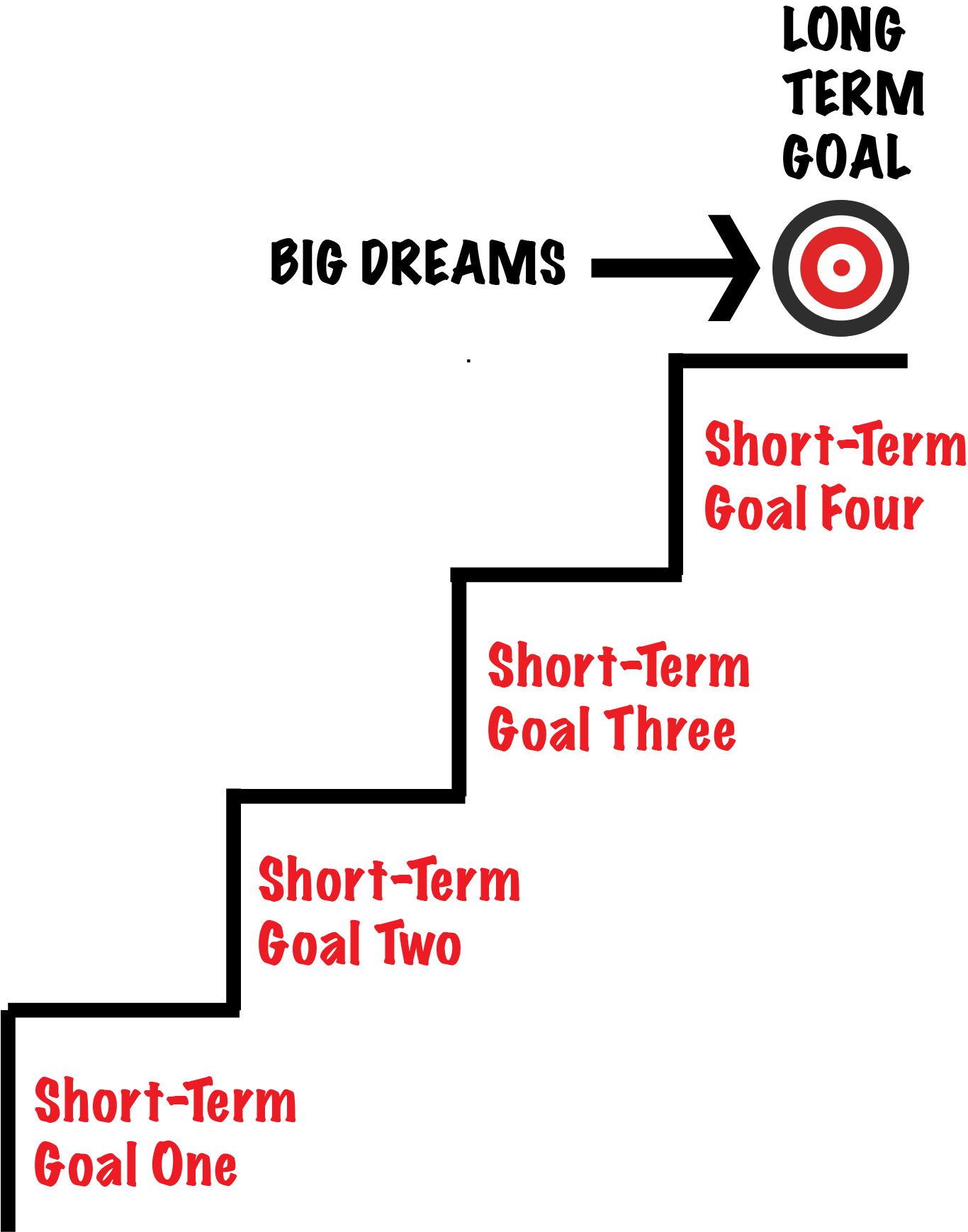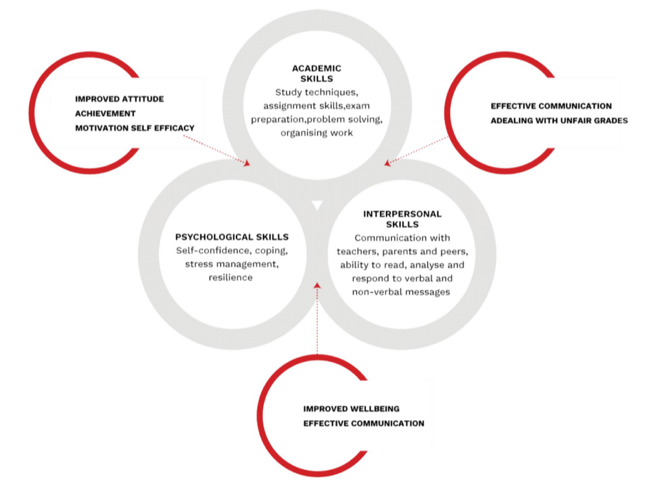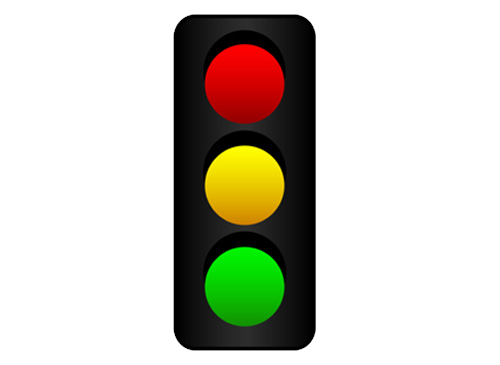Goal Setting and Time Management for Students: Why It Matters
As your students are looking to achieve that ‘A’ grade, it is important to remember that both goal setting and time management are critical skills that create the base for success. For some students, the lack of these skills is the only thing standing in the way of becoming an ‘A’ Student.
The Relationship Between Goal Setting and Time Management
Goal setting allows students to truly visualise where they are going and motivate them to get there. Without these goals in place they may feel lost, or lack motivation when engaging in the classroom or doing homework. Once goals are set, time management helps your student plan exactly how they are going to achieve their goals and stay on track with not just school, but also work and social commitments.
Why Time Management Is Essential for Goal Setting
Good time management is crucial for students when it comes to achieving their goals. By managing their time effectively, they can prioritise tasks, stay organised, and ensure that they have enough time for studying, assignments, and other important activities.
With proper time management, students can avoid last-minute stress and procrastination, allowing them to make steady progress towards their goals. It also enables them to stay focused and be more productive during their study sessions.
Goal setting and time management are important to every student. There are many different strategies that can be implemented depending on what your child is trying to achieve and how long they have to get there. There are also many different methods our ‘A’ grade students use to effectively manage their time and prioritise successfully
3 Strategies to Master Personal Goal Setting for Students
The problem with goal setting, is that many students don’t consider that they are actually working towards something while at school. Students benefit when they consider what really matters to them and work towards something they want and feel passionate about.
For your student, it may be something concrete a career choice, or something more abstract like the strengths they wish to cultivate.
Think about it… If your student can associate what they are learning in school with their long-term goals and something that is important to them, they will be more motivated to work towards that goal. The achievement motivation that is created by goal setting, causes your student to strive for success.
‘A’ grade students understand the importance of goal setting and primarily use three different strategies to set and achieve these goals:
1. The Staircase Model
‘A’ grade Students are able to use the staircase model to really focus on those long-term goals by creating smaller goals that build up to where they want to be. 
Big dreams can be very daunting. A student in Year 9 that dreams of becoming a doctor may see that goal as far away, intimidating, and frightening. However, if they break up that big goal into smaller short-term goals it will make that big dream of becoming a doctor seem much more achievable. Using the staircase model also gives students something to work for, which adds both motivation and excitement.
So, if you had that Year 9 student that wanted to be a doctor, that would be their big, long term-goal. Then you can work backwards with them to set those smaller goals that will help them get there. Some of those short-term goals may be getting an A in just 1-2 classes, then getting an A in all of their classes, and eventually getting a great mark on ATAR.
2. SMART Goal Setting
SMART Goals are not just used by students, but in all different professions and businesses. Your child can use this strategy to make sure they have significant goals they feel are achievable. Using the SMART goals strategy, your student will be able to write goals that are well-structured, clear, and carefully planned.
Each goal that students create should contain all five elements of a ‘SMART’ goal. ‘SMART’ is an acronym for the following aspects of an excellent goal.
S: Specific
In order for your student’s goal to be specific, they must clearly identify an action; whether that be finishing an essay or reading a certain number of pages. Being specific makes student think about what needs to be achieved.
M: Measurable
When students set goals, being measurable is important for both their motivation and feeling of accomplishment. ‘A’ Students make sure that their goal can clearly be logged, measured, and evaluated. This allows students to check in and evaluate how they are progressing with their goal and be proud of what they have achieved.
A: Achievable
We often assume that goals need to be something we need to struggle for. Whilst goals should be moderately difficult, ‘A’ Students make sure that these goals are realistic enough to achieve. This enables your child to develop that achievement motivation and remain feeling empowered.
R: Relevant
When setting goals, ‘A’ grade students always keep in mind why they want to achieve them and what they will accomplish when the goal is complete . Doing this keeps the goal relevant to their own passion and also contributes to their enthusiasm.
T: Timely
This part of ‘SMART ’goals ties into the time management that comes after the goal setting. All goals should have some sort of deadline, especially with students. The time limit gives your student a challenge, but also provides a feeling of accomplishment once they complete the goal on time.
‘A’ grade students use the SMART goal strategy in many different ways. Some students may set one smart goal for every class, others may group them together into one goal for the term, and some may even set specific smart goals for a certain assessment. The thing to keep in mind is that students use this strategy in all different ways, a goal being ‘SMART’ just allows students to actually think about their goals and ensure that they are effective, regardless of what the goal is about.
3. Areas for Change Model
While the other two tactics for goal setting revolve around creating the goals, the Areas for Change Model allows your student to see what areas they may want to change and set goals for.
The Areas for Change Model shows there are three different areas of a student that can be transformed. They include academic skills, psychological skills, and interpersonal skills. All students have strengths and weaknesses in different areas. This can be based on their learning language, confidence levels, or personality. The model can allow students to think about where they are able to improve and what may be stopping them from achieving their goals.
A student may look at this model and believe they have superb academic and interpersonal skills; they may choose to set goals revolving around their psychological skills such as increasing confidence or stress management. Another student may look at this and see that they are lacking in academic skills. This can be improved by setting goals around study techniques and exam preparation. Whatever area your student chooses to work on, this model can help them visualise what areas they want to focus on when setting their goals.
Once your student has a good system for goal setting, they can move on to improving their skills in time management which allows dedicated time to work on those goals.
4 Systems For Effective Time Management
Particularly in high school, ‘A’ grade students need to understand the balance between school, work, extracurricular activities and their social life. It definitely doesn’t come naturally or easily, but once your child is able to gain this routine and have tactics that help them manage their time, they will be able to achieve more in school and reduce unnecessary stress.
The key with time management is that students have many different time management skills and approaches. Some students are great with daily time management and making sure that they are actually productive with their time throughout the day, but don’t really know what is going on at the end of the week or the term. Other students may have a good long-term time management strategy but have a hard time finishing their homework or knowing what classes they have during the week.
For that exact reason, there are different strategies that can be used to ensure that your student is successful throughout the term, on a weekly basis, and on a daily basis:
-
The Term Assessment Planner
Having a diary that shows your student what is coming up throughout the entire term is effective for planning ahead and making sure they are able to complete all of their tasks in advance. ‘A’ grade students will write down all of their assessments and exams at the beginning of the term so they know exactly what is coming up for each class.
-
The Traffic Light System
The traffic light system creates a weekly or monthly planner where the student identifies all the tasks that are coming up and allocates them with a specific colour that mean different things.
GREEN: This task is still about 3-4 weeks away and should be in the initial stages.
YELLOW: This task is 1-2 weeks away and I should finish brainstorming and start drafting.
RED: This task needs to be completely finished this coming week
As time progresses, students will move their assignments from green, yellow, and red until they’re able to cross them out.
This time management system is perfect for visual learners and allows your student to create a weekly or monthly planner that helps them prioritise their upcoming tasks.
Based on my experience, this strategy is extremely useful during exam periods or busy times. There is also a massive sense of accomplishment when your student is finally able to cross something off of that list.
-
Weekly Management Plan
This time management schedule is perfect for those students who feel like they just can’t get a hold of their homework and designated study times. Using a weekly planner creates an overview of what they should be doing at every hour of a busy period of the day.
It should include:
- Study Time
- Study Breaks
- Homework Time
- Family Time
- Extra-curriculars
- Any other important activity
‘A’ grade students realise that a weekly time management plan can allow them to have a good balance between all of their commitments and study times. It also helps your student plan in advance how they’re going to fit homework and studying into a busy schedule.
-
Daily Time Management Strategy
Another strategy that your student can utilise is a daily strategy. This helps students who are easily distracted or have trouble with procrastination. It is also perfect for a designated “focus day” where your student may choose to do work for a specific subject or assignment.
In this time management plan, they should outline at least four tasks they are going to try to complete, how much time is required to complete the task, and what time they will be working on it. It is also very important that students reflect on how their daily time management strategy went by reading their own performance and raining down any follow-up tasks that need to be completed after the day is over.
Recognise the Importance of Time Management and Goal Setting
When it comes to goal setting and time management, the important thing is that you and your student understand that everyone is different.
These are just some of the strategies and tactics that can be used for both setting goals and managing time, which are both very important aspects of being academically successful. Some students may use all of them, and some students may just use one or two. The important thing is that your student recognises which ones they can use and why it’s beneficial to use them.
If you feel like your child could use extra support with effective time management and goal setting, contact A Team Tuition and discover how our tutors can help.


